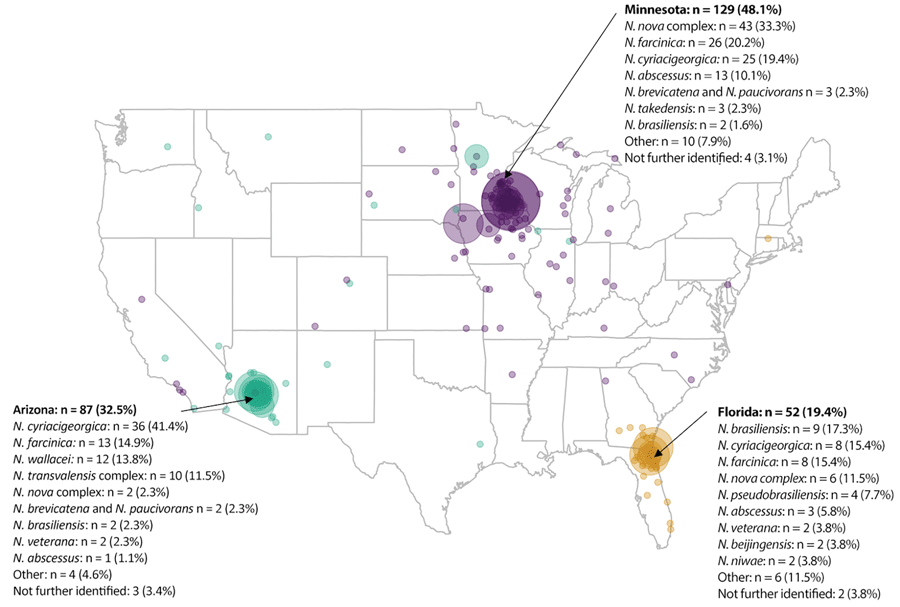Volume 29, Number 12—December 2023
CME ACTIVITY - Synopsis
Invasive Nocardia Infections across Distinct Geographic Regions, United States
Figure

Figure. Geographic distribution of patients for study of invasive Nocardia infections across 3 distinct geographic regions, United States. Color codes and list of Nocardia spp. represent the geographic location of diagnosis and treatment. Each circle represents a patient in the study cohort’s postal (ZIP) code of residence at the time of data extraction (2022); larger circles represent ZIP codes with more patients. Percentages for states are for the full study cohort; percentages for individual species are for that state.
1Current affiliation: Simran Gupta, Massachusetts General Hospital & Brigham and Women’s Hospital, Boston, Massachusetts, USA.
2Current affiliation: Kathryn E. Kimes, Honor Health, Phoenix, Arizona, USA.
3Current affiliation: Ahmed Hamdi, Baylor College of Medicine, Houston, Texas, USA.
4Current affiliation: Juan Gea-Banacloche, National Institute for Allergy and Infectious Diseases, Bethesda, Maryland, USA.
5Current affiliation: Prakhar Vijayvargiya, University of Mississippi Medical Center, Jackson, Mississippi, USA.